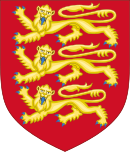
Back Condáu metropolitanu AST Metropolitan County BAR Comtat metropolità Catalan Anglická metropolitní hrabství Czech Sir fetropolitan Welsh Metropolitan County German Metropolaj provincoj de Anglio Esperanto Condado metropolitano Spanish Linnkrahvkond Estonian Metropolikreivikunta Finnish
| Metropolitan county | |
|---|---|
 | |
| Category | Counties |
| Location | England |
| Found in | Regions |
| Created by | Local Government Act 1972 |
| Created |
|
| Number | 6 |
| Additional status | |
| Populations | 1.2–2.8 million |
| Subdivisions | |
| This article is part of a series within the Politics of the United Kingdom on the |
 |
|---|
Metropolitan counties are a subdivision of England which were originally used for local government. There are six metropolitan counties: Greater Manchester, Merseyside, South Yorkshire, Tyne and Wear, West Midlands and West Yorkshire.
The metropolitan counties were created in 1974 as part of a reform of local government in England and Wales. They were the top tier of a two-tier system of counties and metropolitan boroughs, and were created to govern large urban areas. In 1986 their county councils were abolished, and since then the metropolitan counties have had no local government role. The local government functions were largely taken over by the metropolitan boroughs, with joint boards created to co-ordinate some county-wide services.[1] The metropolitan counties are all ceremonial counties which share their borders.
All of the metropolitan boroughs belong to combined authorities, which are statutory bodies introduced in 2011 that allow local authorities to voluntarily pool responsibilities and collaborate. The combined authorities for Greater Manchester, South Yorkshire, West Midlands and West Yorkshire cover the same areas as the metropolitan counties; the boroughs of Merseyside are part of the Liverpool City Region, and those of Tyne and Wear are part of the North East Combined Authority.[2]
- ^ Her Majesty's Stationery Office, Aspects of Britain: Local Government, (1996).
- ^ "North East Combined Authority - About". North East Combined Authority. 19 March 2024. Retrieved 13 July 2024.